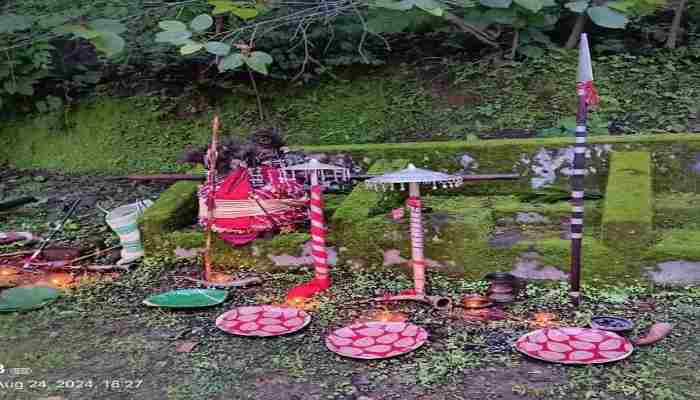
RAIPUR,CG,BHARAT: In a dedicated move to preserve Chhattisgarh’s rich cultural heritage, Chhattisgarh Chief Minister Vishnu Deo Sai has called for focused conservation and promotion of the state’s sacred Devguri sites.
These ancient tribal shrines, revered by indigenous communities and rooted in the forested regions of Chhattisgarh, are essential to both the cultural and ecological fabric of the area. The relevant departments have been asked to implement effective measures that not only protect these sites but also encourage local community participation, promoting both heritage preservation and regional tourism.
The Devguri sites—such as Bhangaram, Dokri Mata Gudi, Semaria Mata, Lohjarin Mata Gudi, Maavali Mata Gudi, Maa Danteshwari Gudi, and Kanchan Devi Gudi—serve as shrines to local deities. They are focal points for tribal rituals, festivals, and community gatherings, underscoring their importance to both cultural traditions and biodiversity. The Chhattisgarh Forest Department, alongside agencies like CAMPA, the Chhattisgarh State Biodiversity Board, and the State Forest Research and Training Institute, has documented and conserved over 1,200 Devguri sites to date.
Principal Chief Conservator of Forests and Chief of Forest Force V. Srinivas Rao (IFS), noted that under the leadership of CM Vishnu Deo Sai and Forest Minister Kedar Kashyap, both of whom hail from tribal regions, the Forest Department remains dedicated to safeguarding these culturally rich areas. Their conservation approach aligns with broader goals of sustainable forest management and biodiversity preservation.
From an ecological standpoint, the Devguri groves are invaluable. They are home to rare, endangered, and endemic plant species, play a role in preventing soil erosion, and serve as natural refuges where hunting, tree cutting, and other harmful activities are strictly forbidden by community customs. These groves not only help conserve biodiversity but also uphold tribal customs and practices. Tribal communities perform special rituals in Devguri during festivals like Madai, Hareli, and Dussehra, and newly married couples seek blessings there, reinforcing the groves’ significance in tribal life.
To support accessibility and conservation, the Forest Department has undertaken landscaping work, including footpaths, eco-friendly structures, and protective fencing around Devguri sites.
Chhattisgarh State Biodiversity Board Chairman Rakesh Chaturvedi emphasized that the department works closely with local communities to plant native species, including sal, teak, bamboo, and medicinal plants, thereby restoring the natural biodiversity of these groves. Member Secretary Rajesh Kumar Chandele (IFS) highlighted the diverse wildlife in these areas, such as peacocks, wild boars, and monkeys, while encouraging non-destructive resource use practices.
Dr. Neetu Harmukh, a senior scientist at the State Biodiversity Board, announced that these sacred sites are now formally recorded in the People’s Biodiversity Register of the National Biodiversity Authority. Research is also underway to document the flora and fauna in Devguri. Despite challenges like urbanization, encroachment, and shifting beliefs, Chhattisgarh’s Forest Department remains committed to preserving the Devguri groves, ensuring they continue to reflect the region’s ecological and cultural legacy for generations to come.
© Bharatiya Digital News. All Rights Reserved. Developed by TechnoDeva